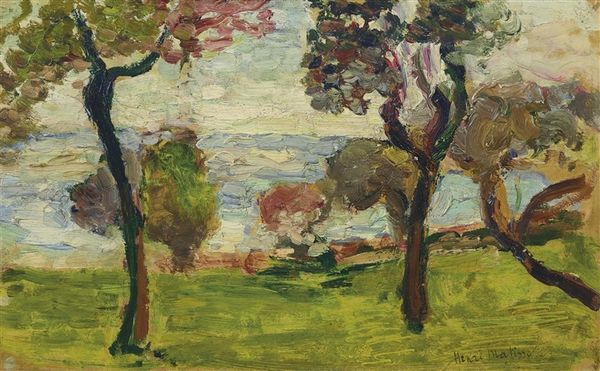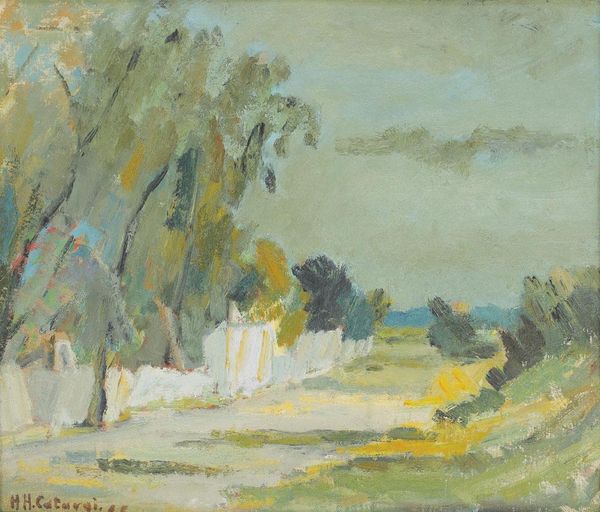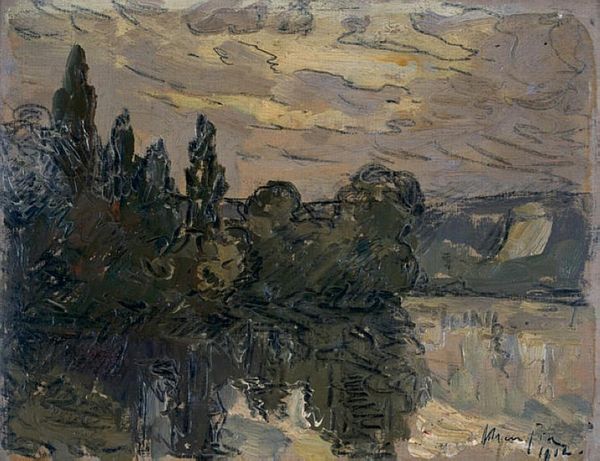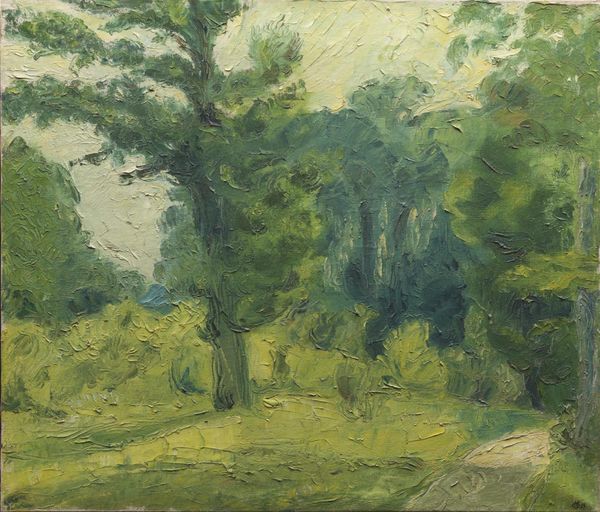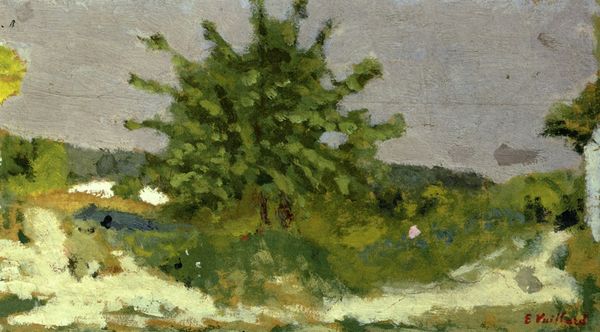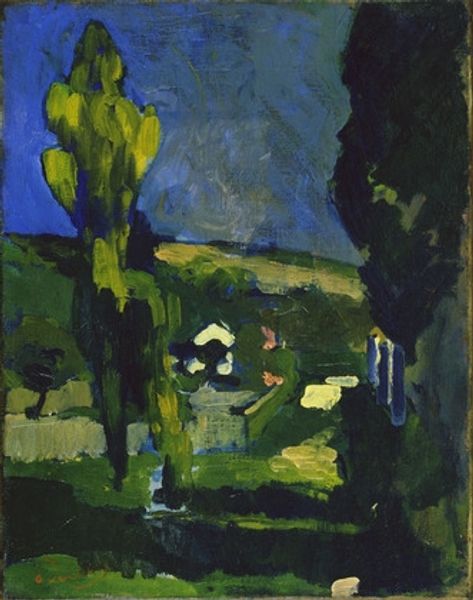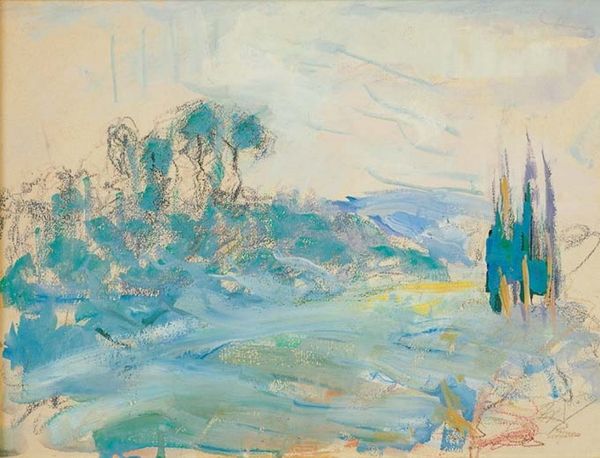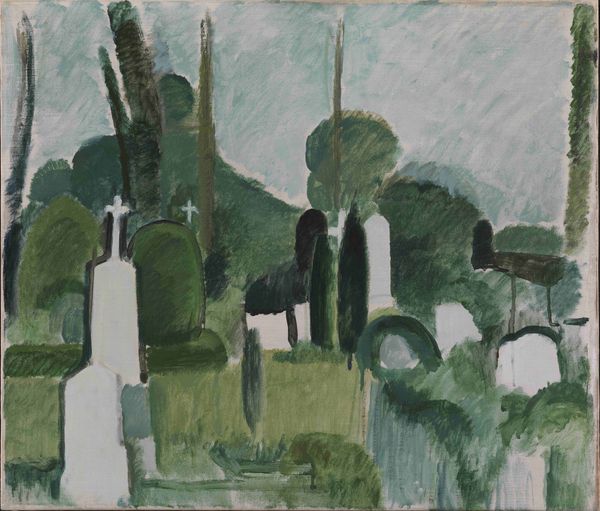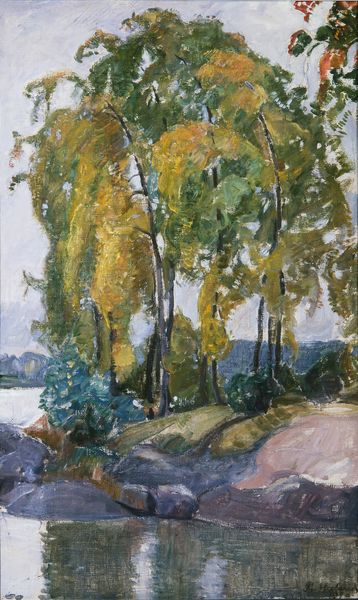
Landscape with Cypress Trees 1920
0:00
0:00
konstantinosparthenis
National Art Gallery (Alexandros Soutzos Museum), Athens, Greece
Dimensions: 19.1 x 239 cm
Copyright: Public domain US
Curator: What a beautifully subdued piece. This is Konstantinos Parthenis' "Landscape with Cypress Trees," painted in 1920, currently residing at the National Art Gallery in Athens. Editor: It has such a misty, ethereal quality, doesn't it? The brushstrokes are so loose, almost impressionistic, and yet… purposeful. The texture of the paint itself gives it an earthy grounding. Curator: Parthenis, as an artist, held an important position in the development of modern Greek art, bringing to it elements of European Modernism and integrating them with local subjects. He pushed against academic traditions. Editor: It looks like oil paint, doesn’t it? The impasto in areas suggests he worked quickly, en plein air perhaps, really capturing the immediacy of the light. I’m drawn to the layers of production, how each stroke builds toward the overall image. Curator: Yes, likely done outdoors. The composition is deceptively simple, three cypress trees piercing a cloudy sky. These landscapes served almost as a meditation for Parthenis. The subject matter, while local, allowed for an exploration of light and color relationships reflective of broader artistic movements. Editor: It’s interesting to think about the labor involved. The grinding of pigments, the stretching of canvas, and how all those physical processes lead to something so… dreamlike. Curator: Indeed. And while the dreamlike quality persists, the societal forces must not be forgotten: Parthenis and his work were not always celebrated during his life. Modernism often meets with resistance initially. Only later does its importance become more recognized by society. Editor: Absolutely. Even the tools available – the brushes, the quality of the paints – these reflect the historical moment, and influenced what he could achieve. Thinking about these elements enriches how we interpret its emotional effect. Curator: It’s a potent reminder that art is not created in a vacuum, isn't it? Looking at the artwork helps reflect the conditions that brought it into being. Editor: Precisely, it's like tracing the hand that held the brush. Thank you, that made the materiality palpable to me.
Comments
No comments
Be the first to comment and join the conversation on the ultimate creative platform.

